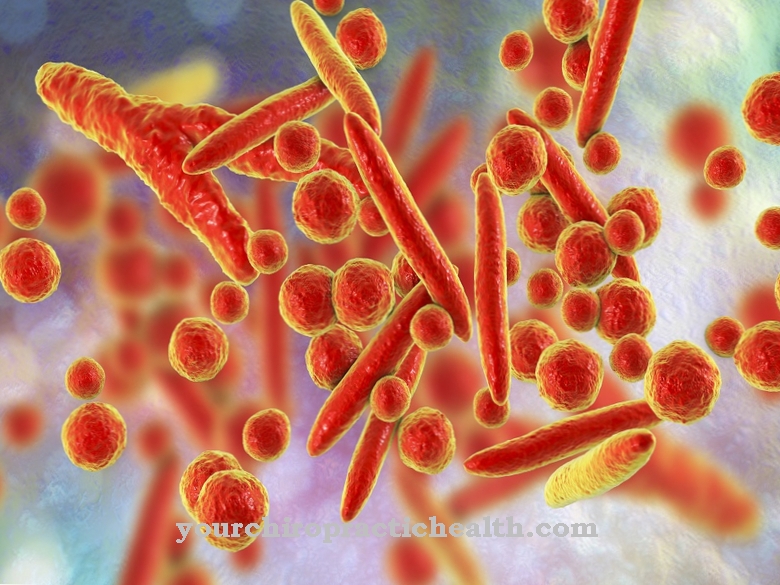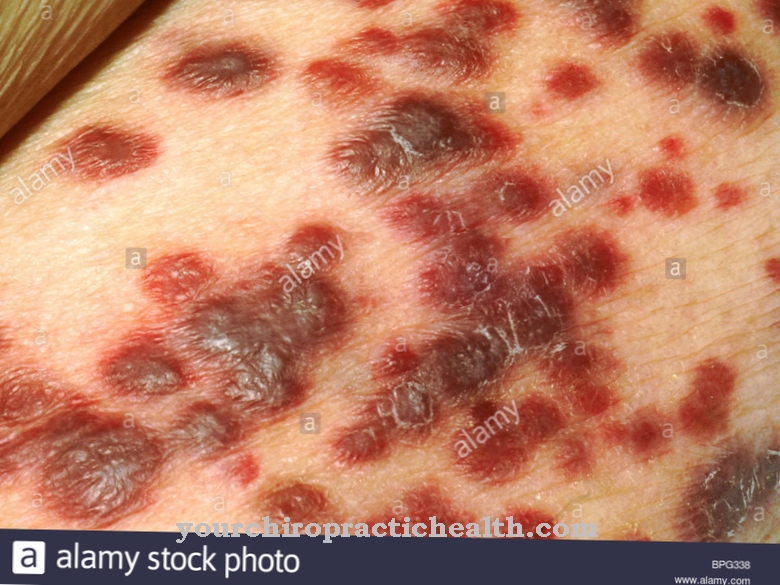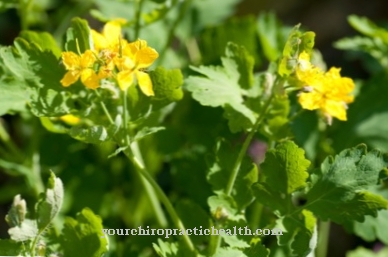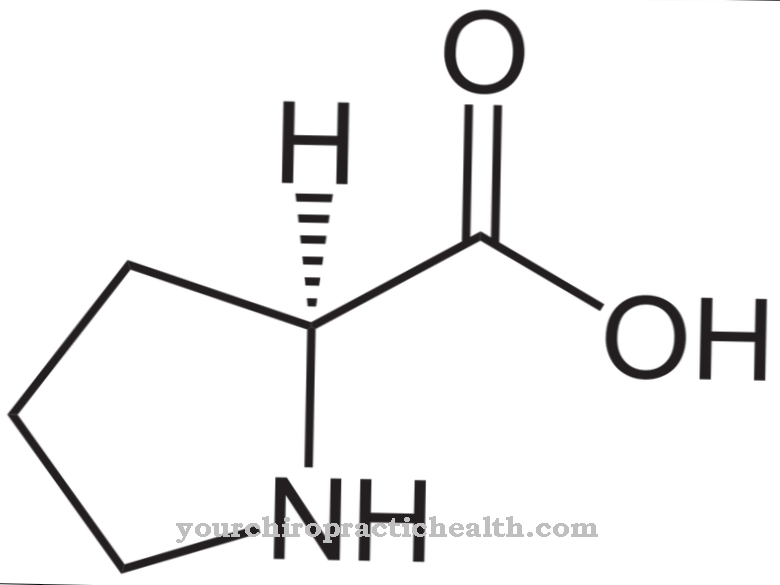At Treponema pallidum it is a bacterial species from the spirochete family. The bacterium is coiled in a helix and causes various infectious diseases.
What is Treponema pallidum?
Treponema pallidum represent a species of gram-negative, helical bacteria in the family of the spirochetes. Spirochetes themselves are unusually long (about 5 to 250 µm), thin (about 0.1 to 0.6 µm in diameter) and spiral-curved Shape marked.
The species Treponema pallidum can be divided into several subspecies, each of which causes different infectious diseases. For humans, it is an obligate pathogenic agent. Thus, they also infect healthy and immunocompetent hosts and cause diseases in these.
Occurrence, Distribution & Properties
Treponema pallidum is a species of the spirochetes, which in turn are primarily found as free-living bacteria in soils, water and water sludge. Treponema pallidum does not survive long outside of humans, however, because it is sensitive to heat, drought, cold and other environmental conditions.
Treponema pallidum is only found in humans. The bacterium can only be transmitted through direct contact with the mucous membranes of an infected person. As a rule, infection occurs during sexual intercourse. Treponema pallidum penetrates the skin or mucous membrane through the smallest injuries, usually in the genital and anal area.
In rare cases, the infection can also take place through the oral cavity or infected objects. In addition, an infected mother can transmit Treponema pallidum to the unborn child from the 4th month of pregnancy. Theoretically, transmission via blood transfusion is also possible, but due to systematic controls in Germany it is practically impossible.
Treponema pallidum has a length of 5 to 15 µm and a width of about 0.2 µm. The bacterium has between 10 and 20 turns and rotates around its longitudinal axis. Treponema pallidum has very fine structures, which is why it is difficult to visualize even with staining under the microscope. Life observations can, however, be carried out with dark field microscopy. The pathogen is detected by means of a serological blood test.
Since Treponema pallidum is a pathogenic bacterium, it causes infectious diseases that require treatment. A healing of the respective illness is only possible through the administration of antibiotics.
In connection with transmission, it is important that condoms are effective against sexually transmitted pathogens, but not 100 percent protect against infection. To avoid infection, infected people should therefore refrain from sexual intercourse.
If Treponema pallidum is detected, a non-named report must be made to the RKI by the diagnostic laboratory. If there is a local spread, the responsible health authority as well as doctors in the region must be informed in order to take preventive measures for further spread. This is especially the case with syphilis caused by Treponema pallidum pallidum.
Illnesses & ailments
Treponema pallidum causes different diseases depending on the subspecies. Syphilis is probably the best-known disease caused by Treponema pallidum pallidum. It is a sexually transmitted infectious disease that is also known as syphilis, syphilis, or hard chancre. The transmission of syphilis occurs mainly during sexual acts through contact with the mucous membranes. Infection is also possible at birth if an infected mother transfers the pathogen to her child. In this case one speaks of a syphilis connata.
Syphilis has a very diverse appearance. Characteristic are painless ulcers on the mucous membranes and swellings of the lymph nodes at the beginning of the disease. A chronic course is also possible, which is characterized by a diverse infestation of skin and organs. In the final stage of syphilis, the disease causes destruction of the central nervous system. The first symptoms appear around three weeks after infection.
Syphilis has 4 stages. In primary syphilis, a painless lump forms at the infection site, which is highly contagious. Lymph node swelling also occurs, but under certain circumstances physical changes may not occur.
This phase is followed by secondary syphilis, in which the pathogen spreads through the blood and lymphatic vessels throughout the body. It is characterized by changes in the skin and mucous membranes as well as the formation of scaly and / or purulent vesicles and is also highly contagious.
After a silent and sometimes long-lasting phase, tertiary syphilis occurs, in which symptoms such as nodules on the mucous membrane appear. These then break down into ulcers, and the destruction of muscles, skin and organs continues. In this stage of syphilis, psychological and neurological deficits (e.g. dementia) can occur.
The last stage is quaternary syphilis (neurosyphilis). It is often symptom-free, but without treatment the tissue in the brain slowly dies. If syphilis is congenital, children often have mental and / or physical disabilities and are born as deficient or premature births. If a diagnosis of syphilis is made, antibiotics such as penicillin are used. So syphilis is curable.
Endemic syphilis (Bejel) is triggered by the bacterium Treponema pallidum endemica. It is an infectious disease that is not sexually transmitted. The transmission takes place through smear infection with close social contact. Non-venous syphilis occurs primarily in children between the ages of 4 and 10 who live in the arid areas of Africa, the Arabian Peninsula and the Middle East. Treatment is with penicillin for a period of at least 2 weeks; severe cases must be treated for longer.
The skin disease pinta is caused by Treponema pallidum carateum and occurs mainly in Central and South America and Mexico. It is a so-called tropical treponematosis, in which areas of the skin are depigmented or hypopigmented in the course of the disease. These are known as leukoderma.
It is transmitted through skin contact and symptoms appear after about 1 to 3 weeks. In most cases, Pinta is chronic and lasts for years; the therapy is usually with benzylpenicillin.
Treponema pallidum pertenue is the causative agent of the non-venous infectious disease yam disease, which occurs primarily in tropical regions. The name is derived from the French word for raspberry (framboise). The name also describes the typical changes in the skin. The chances of recovery are good with treatment with penicillin.
Infectious diseases caused by the pathogens of the Treponema pallidum species cannot be prevented with a vaccine.












.jpg)






.jpg)

.jpg)




.jpg)

